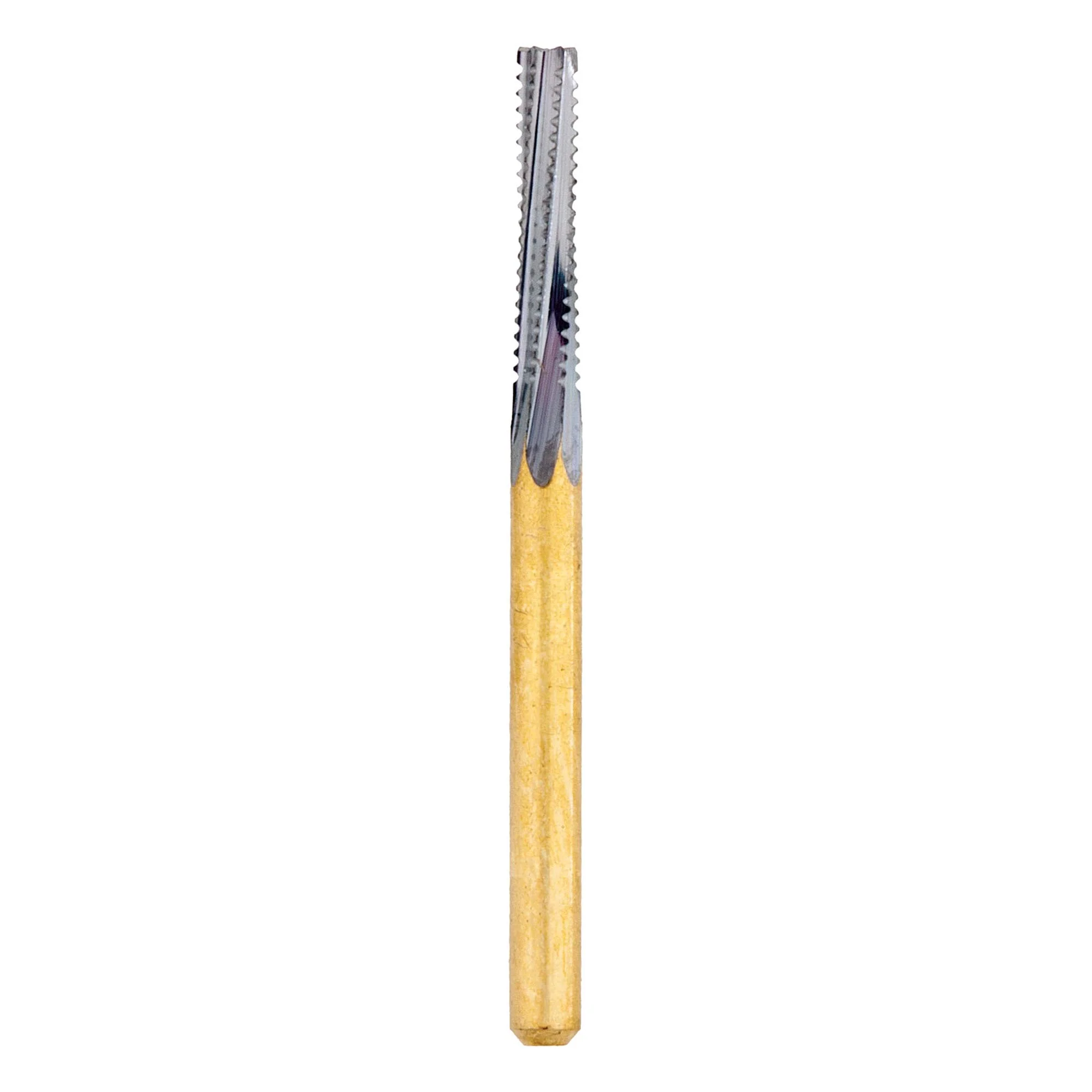Introduction
The evolution of dental files is a fascinating journey that mirrors the broader advancements in dental technology and patient care. From early rudimentary metals to today's sophisticated nickel-titanium alloys, each innovation has brought increased efficiency, safety, and comfort to dental practices worldwide. This article delves into the historical development, technological breakthroughs, and future prospects of dental files, providing an insightful look into how these essential tools have transformed over time.
Historical Foundations of Dental Files
● Early Materials and Primitive Designs
Dental files have been a cornerstone in dental procedures since their inception. In the early days, dental practitioners relied on simple, manually operated instruments made from readily available materials. These rudimentary tools were often constructed from metals like bronze and silver, which, while durable, lacked the precision and flexibility necessary for intricate dental work. The focus was primarily on function rather than patient comfort or procedural efficiency.
● Impact of Early Dental Practices
The early dental files, though primitive, laid the groundwork for future innovations. They were primarily used for shaping and cleaning root canals, processes that were often painful and fraught with complications. Historical records show that the lack of precise tools often led to less-than-perfect outcomes, highlighting the need for advancement in dental instrumentation.
The 1970s: Metal Dominance in Dentistry
● Common Metals Used in Dental Files
During the 1970s, stainless steel emerged as the metal of choice for dental files due to its strength and resistance to corrosion. This era marked a significant improvement in the durability and lifespan of dental instruments, enabling more consistent results in endodontic procedures. However, while stainless steel files were robust, their rigidity posed challenges in navigating the complex anatomy of root canals.
● Limitations and Challenges Faced
The primary limitation of stainless steel files was their lack of flexibility. This rigidity made it difficult to reach the curved canals, increasing the risk of file breakage and procedural complications. The dental community recognized these challenges, which catalyzed the search for more advanced materials that could provide greater flexibility without sacrificing strength.
Technological Advancements in Dental Materials
●Introductionof Stainless Steel and Basic Alloys
As dental technology progressed, the introduction of stainless steel alloys brought enhancements to file design and functionality. These materials provided a significant upgrade from earlier rudimentary tools, offering better control and more uniform results. Despite these improvements, the need for even more adaptable and reliable materials was apparent.
● Improvements in Durability and Efficiency
The enhancements in materials also led to the development of more consistent and efficient procedural techniques. Dental practitioners could perform root canal treatments with greater accuracy, reduced risk, and improved patient comfort. These advancements set the stage for further innovations that would revolutionize dental file technology.
The Rise of NiTi Alloys in Dentistry
● Properties and Benefits of Nickel-Titanium
The introduction of nickel-titanium (NiTi) alloys represented a paradigm shift in dental file technology. These alloys offered exceptional flexibility, shape memory, and resistance to cyclic fatigue. The ability of NiTi files to return to their original shape after deformation allowed for safer navigation through the intricate network of root canals.
● Revolutionizing Root Canal Procedures
NiTi files have revolutionized root canal procedures by providing dentists with tools that can adapt to the natural contours of the tooth. This capability has reduced the incidence of file breakage and improved the overall success rate of endodontic treatments, offering patients a more reliable and less invasive experience.
Heat-Treated Alloys: A Modern Marvel
● Development Process and Unique Characteristics
Advancements in heat treatment processes have further enhanced the properties of NiTi alloys. By altering the metallurgical structure, these processes create files with superior flexibility and strength characteristics. Files such as M-Wire and Blue-wire exemplify how heat-treated alloys can optimize dental procedures by reducing the risk of procedural errors.
● Comparison with Traditional Materials
Compared to traditional stainless steel, heat-treated NiTi files exhibit a remarkable improvement in resistance to wear and cyclic fatigue. This advancement not only increases the lifespan of the files but also enhances their cutting efficiency, facilitating a more conservative approach to root canal preparation.
Digital Integration in Dental Instrumentation
● Transition Towards Digital and Smart Tools
The digital revolution has not spared the field of dentistry, bringing forth digital and smart tools that integrate seamlessly with modern dental practices. These tools provide real-time data, improving the precision and outcome of dental procedures. Dentists can now offer more tailored treatments, enhancing patient care and satisfaction.
● Benefits for Dental Precision and Patient Care
The integration of digital technology in dental instrumentation allows for more accurate measurements and improved diagnostic capabilities. This evolution ensures that dental professionals can provide high-quality care while minimizing risks and maximizing patient comfort.
Safety Enhancements in Modern Dental Files
● Ergonomic Designs and User Safety
Modern dental file manufacturers focus on ergonomic designs to enhance user safety and comfort. The inclusion of features like tactile feedback and anti-slip grips helps practitioners maintain control during procedures, reducing fatigue and enhancing the overall treatment experience.
● Reducing Patient Discomfort and Risks
Today’s dental files significantly reduce patient discomfort by minimizing the invasiveness of procedures. The flexible properties of NiTi alloys enable more precise shaping of canals, decreasing the need for aggressive interventions and thereby lowering the risks associated with root canal treatments.
Environmental Considerations in Dental Materials
● Evolution Towards Sustainable and Eco-Friendly Materials
As environmental awareness grows, the dental industry is moving towards sustainable and eco-friendly materials. Dental file manufacturers are increasingly sourcing materials that have a lower environmental impact, aligning with global efforts to reduce waste and promote sustainability in medical practices.
● Impact of Environmental Awareness on Material Choices
This shift not only addresses environmental concerns but also opens up new possibilities for innovation in dental materials. With a focus on sustainability, manufacturers are exploring biodegradable and reusable materials, ensuring that modern dental practices leave a smaller ecological footprint.
Future Innovations in Dental Instrumentation
● Emerging Technologies on the Horizon
The future of dental instrumentation is promising, with emerging technologies such as 3D printing and AI-powered diagnostics poised to redefine dental care. These innovations will further enhance the capabilities of dental professionals, enabling them to deliver more precise and effective treatments.
● Predictions and Expectations for Future Advancements
As technology continues to evolve, dental file manufacturers are expected to develop even more advanced tools that incorporate the latest scientific discoveries. The focus will likely be on increasing precision, durability, and patient comfort, ensuring that dental care keeps pace with advancements in technology.
Global Influence and Market Trends in Dentistry
● How Global Trends Shape Dental Instrument Evolution
Global trends have a significant influence on the evolution of dental instruments. The increasing demand for minimally invasive procedures and higher patient expectations are driving innovation in dental file manufacturing. These trends are shaping the future of dental care, promoting continuous improvement in techniques and materials.
● Regional Differences and Market-Specific Adaptations
Different regions have unique dental needs and preferences, which influence the development and distribution of dental files. Manufacturers must adapt their products to meet the specific requirements of diverse markets, ensuring that they can provide high-quality solutions to dental professionals worldwide.
Conclusion
In conclusion, the evolution of dental files from rudimentary metals to advanced heat-treated alloys marks a significant leap forward in dental care. This transformation has been driven by technological advancements, safety considerations, and environmental awareness, ensuring that modern dentists have the tools necessary to provide effective and comfortable treatments. As the field continues to advance, we can expect even greater innovations that will further enhance the quality of dental care.
● About Boyue
Jiaxing Boyue Medical Equipment Co., Ltd is a leading manufacturer specializing in precision grinding technology. Boyue excels in producing high-quality medical rotary cutting tools, including dental burs and files. With a strong R&D team, accurate inspection processes, and large production capacity, Boyue offers competitive prices and exceptional service. For over 23 years, Boyue has been a trusted supplier of carbide burrs and dental files, catering to global markets and ensuring superior quality through continuous innovation and strict quality control.

Post time: 2025-02-20 19:50:06


